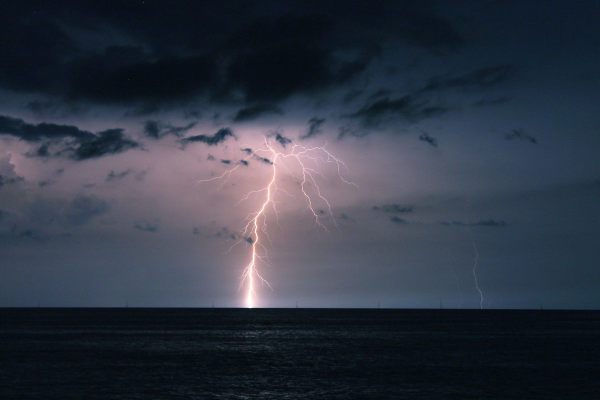Watch Lightning Strike in Slow Motion
It not only looks cool, but also helps scientists better understand lightning rods.
Taking a photo or video of lightning requires unreasonable patience, which is why no one’s managed to capture high-speed video of a natural lightning strike hitting a building—until now. Researchers in Brazil set up two high-speed cameras and managed to record not one but three lightning strikes on lightning rods in São Paulo. They published their findings in the journal Geophysical Research Letters.
The two cameras shot at top speeds of 20,000 and 10,000 frames per second, which allows the researchers to stretch out the several milliseconds of each bolt of lightning into a video that clearly shows every step of the process—from the descent from the clouds and the bolt that rises up from the building, to the obliterating flash of the full strike and the plasma that lingers afterward.
Yeah, it looks cool, but there is scientific value in the videos, too. They will help researchers better understand how lightning rods work, which is important for anyone concerned with protecting people and property from severe weather. The rods attract lightning strikes and safely dissipate their intense energy—as much as a billion volts. Engineers can use this new data to better position lighting rods to maximize the areas they protect.
















Follow us on Twitter to get the latest on the world's hidden wonders.
Like us on Facebook to get the latest on the world's hidden wonders.
Follow us on Twitter Like us on Facebook